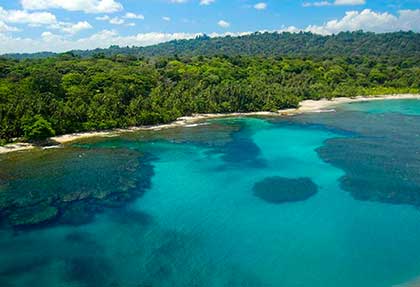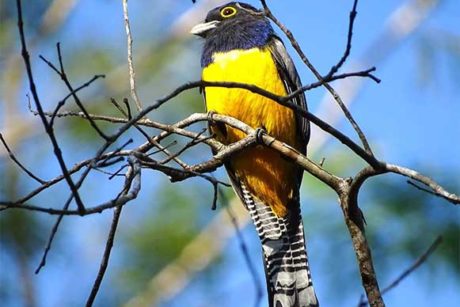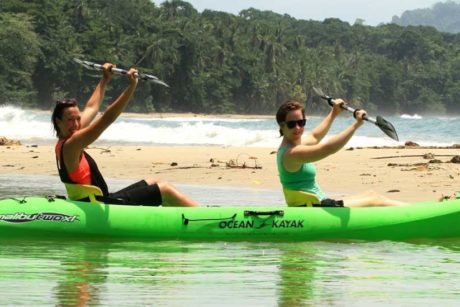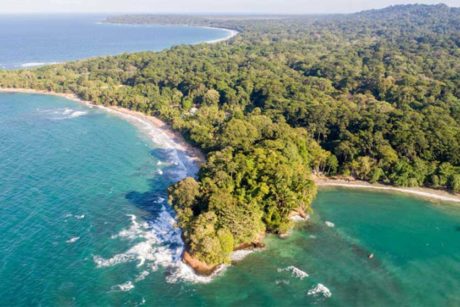
TOURS IN GANDOCA-MANZANILLO
Do you know?
Wild Life

The refuge is made up of numerous species, many of them in serious danger of extinction, such as: Tepezcuintle, the tapir, the puma and the manatee, the otter, the red monkey, the ocelot, the saino, the leatherback sea turtle, yellow-billed toucan, toucan curré, peacock, frigate birds and woodpeckers. Other species of animals that inhabit the refuge are, deer, margay, anteater, sloths, monkeys, squirrels, great variety of snakes, frogs, reptiles, alligators, crocodiles, butterflies of very different species, rodents.
Flora and Fauna

The abundant vegetation of the coastal forest forms a biological corridor of great importance for the wildlife of the refuge, a remnant of primary forest, mainly cativo trees, almond tree, caobilla are true natural jewels, shrubs, heliconias (produces a flower used for flower arrangements ) Mangroves (red mangrove, mangrove mangrove, salty mangrove, white mangrove and button or button mangrove) yolillales and herbaceous swamps. Coconut trees, papaturros or beach grapes. In its marine area there are marine beds formed by the turtle grass (very abundant, at a shallow depth), the manatee grass and several species of algae.
Aquatic Life

Reefs with beautiful underwater landscapes and a rich variety of corals, sponges, molluscs there are some 500 species of fish such as the queen angelfish, the Venus fish, the shad fish (spawning of their eggs), and the blue parrot. . Also common are lobsters, prawns, sea fans, sea cucumbers, long thorns, anemones, shrimp and crabs. Among the reptiles you can see the sea toad, the basilisk and poison dart frogs. There are 3 types of dolphins: the bottle nose, the painted dolphin and the singular tucuxi; and marine turtles; Leatherback, Loggerhead, Green and Carey, which nest in their coasts. The lagoon is another attraction of the refuge where among its lush vegetation reflected in the gentle waters grows one of the most spectacular mangroves in the Caribbean. It also protects the only natural oyster mangrove bank.
Ecosystems

The area has a great diversity of terrestrial habitats with patches of primary forests and with numerous freshwater habitats, marine and extensive coral reef forests. With wetlands that are key to the conservation of the hydrological cycle of the region, the development of research activities and the education of the population.

It protects about 5 Km2 of coral reef (in front of Punta Uva, Manzanillo and Punta Mona), conserving itself in better conditions of the Atlantic of Costa Rica. Classified as a humid tropical forest, its climate is associated with movement of subtropical anticyclones of the Atlantic area with approximate rainfall of 2,000 to 3,000 mm per year, and temperatures ranging between 22 and 27 ºC.
It has an area of 9449 ha. 5013 terrestrial 4436 marine. It has about 15 kilometers of beach, 740 acres of forests, wetlands, marshes, lagoons, flooded forests, reefs, beds of sea plants and algae.
















